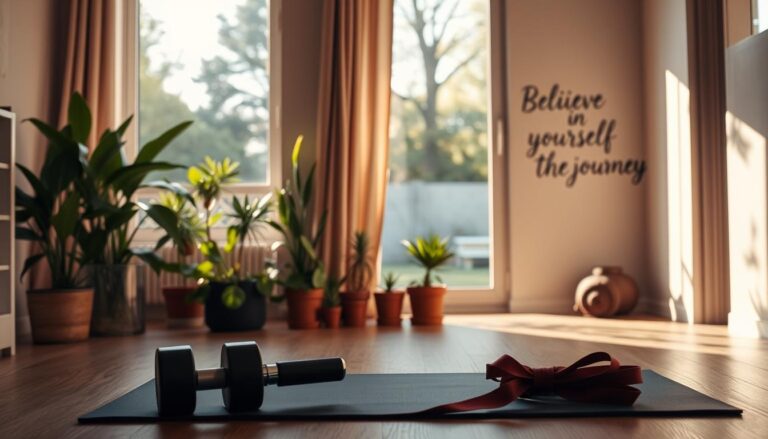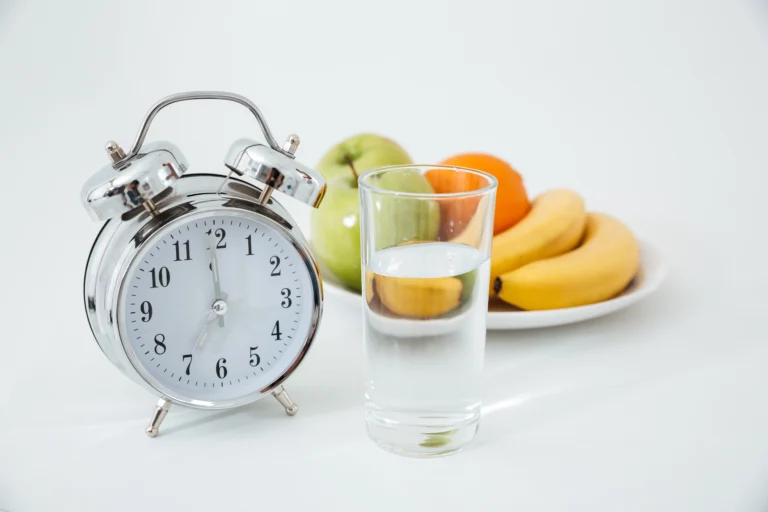Discover the Benefits of Sun Exposure
Have you ever felt that magical warmth when sunlight touches your skin? That moment is more than just a nice feeling. It’s your body unlocking a treasure trove of health benefits.
Sunlight is not just a natural phenomenon; it’s a powerful health ally. Vitamin D production from moderate sun exposure is key to many bodily functions. It strengthens your bones and boosts your immune system, offering vital energy for your well-being.
Modern lifestyles often keep us indoors, away from natural sunlight. Yet, research shows that just 5-30 minutes of sunlight twice a week can significantly improve your health. The benefits of sun exposure are so profound that experts warn avoiding sunlight could be as risky as smoking.
Table of Contents
Key Takeaways
- Sunlight is essential for vitamin D production
- Moderate sun exposure supports multiple bodily functions
- 5-30 minutes of sunlight twice weekly can improve overall health
- Vitamin D synthesis impacts immune and neuromuscular systems
- Sun exposure plays a critical role in preventing chronic diseases
Understanding the Science Behind Sunlight and Health
Sunlight is a complex and powerful natural phenomenon. It interacts with your body in remarkable ways. Your skin health and immune system support depend on understanding how solar radiation works and affects your physiological processes.
Ultraviolet (UV) rays represent a fascinating interaction between solar radiation and human biology. These rays penetrate your skin and trigger numerous biological responses crucial for overall wellness.
UV Ray Interactions with the Human Body
When sunlight touches your skin, several important processes occur:
- Vitamin D production initiates
- Cellular repair mechanisms activate
- Immune system signals are stimulated
Types of Solar Radiation
Different solar radiation types impact your body uniquely:
- UVA Rays: Penetrate deeper into skin layers
- UVB Rays: Primarily responsible for vitamin D synthesis
- UVC Rays: Mostly absorbed by atmospheric ozone
Melanin: Nature’s Sunscreen
Your skin’s natural defense mechanism, melanin, plays a critical role in protecting against excessive UV radiation. This pigment acts as a biological shield, helping maintain skin health by reducing potential damage from prolonged sun exposure.
Understanding solar radiation is key to maximizing health benefits while minimizing potential risks.
Benefits of Sun Exposure for Physical Well-being
Sunlight is great for your body, making bones stronger and helping your heart. It turns sunlight into a powerful tool for health, changing your cells in good ways.
Knowing how sun affects your body can improve your health. The right sunlight can start many good changes in your body:
- Stimulates vitamin D production for bone strength
- Supports cardiovascular health through nitric oxide release
- Helps regulate internal body clock
- Promotes muscle and tissue recovery
Your bones get stronger with some sun. UV rays help your body use calcium better, lowering osteoporosis risk. Calcium absorption goes up a lot with regular, safe sunlight.
Sunlight also helps your heart. UV rays make nitric oxide, which widens blood vessels and might lower blood pressure. Studies show 8-30 minutes of sun in the middle of the day can be good for your heart.
| Sun Exposure Duration | Physical Health Benefit | Recommended Frequency |
|---|---|---|
| 5-15 minutes | Vitamin D Synthesis | 3-4 times weekly |
| 20-30 minutes | Cardiovascular Support | Morning or Late Afternoon |
| 8-30 minutes | Bone Strength Enhancement | During Spring/Summer |
Always be safe in the sun by using sunscreen and staying out of peak UV hours. Your body does best with a little bit of sunlight.
The Vital Connection Between Sunlight and Vitamin D Production
Your body can make vitamin D from sunlight. This is key for staying healthy. It’s amazing how sunlight turns into a nutrient your body needs.
Learning how your body makes vitamin D helps you get the most from sunlight. It ensures you have enough of this important vitamin.
How Your Body Creates Vitamin D
Ultraviolet B (UVB) rays start a cool change in your skin. Your skin has a special molecule that turns into vitamin D when hit by sunlight. This process involves a few important steps:
- UVB rays penetrate the skin’s outer layers
- Cholesterol in skin cells transforms into vitamin D3
- The liver and kidneys further process the vitamin for use
Optimal Times for Vitamin D Production
Not all sunlight is good for making vitamin D. The best times for making vitamin D are:
- Between 10 AM and 3 PM
- During summer months
- In locations closer to the equator
Factors Affecting Vitamin D Synthesis
Many things can change how well your body makes vitamin D from sunlight:
| Factor | Impact on Vitamin D Production |
|---|---|
| Skin Pigmentation | Darker skin reduces vitamin D synthesis |
| Age | Vitamin D production decreases with age |
| Geographical Location | Further from equator means less vitamin D production |
| Sunscreen Use | Blocks UVB rays, reducing vitamin D synthesis |
Knowing these factors helps you make more vitamin D from sunlight. It’s important to balance sun time with safety to keep vitamin D levels healthy.
Sunlight’s Impact on Mental Health and Mood

Sunlight is key for your mental health. Studies show it can make you feel better and help with seasonal affective disorder. When you get sunlight, your brain makes serotonin. This helps control your mood and makes you happier.
There are many benefits of sunlight for your mind:
- It boosts your mood and lowers depression symptoms.
- It helps you sleep better.
- It boosts Vitamin D levels.
- It reduces anxiety and stress.
A 2023 study in the Risk Management and Healthcare Policy journal found that more sunlight means better mental health. Seasonal affective disorder affects about 5% of Americans. It usually starts in fall and winter.
| Sunlight Exposure Impact | Mental Health Benefit |
|---|---|
| 15-30 minutes daily | Improved mood regulation |
| Vitamin D production | Reduced depression risk |
| Serotonin stimulation | Enhanced emotional balance |
Experts say getting outside and enjoying sunlight can lift your mood. Just 8-10 minutes of sun in the middle of the day can help. It can even help with mild depression symptoms.
How Sun Exposure Strengthens Your Immune System
Sunlight is key for a strong immune system. It does more than just warm you up. Learning how UV light affects your body can help you get the most from sun exposure.
The Science Behind UV Light and Immune Response
Getting some sun can really boost your immune system. Studies show a few important ways:
- UV rays help make more white blood cells
- Sunlight can lower inflammation
- It helps make vitamin D, which is good for your immune system
Seasonal Variations in Immune Function
Your immune system changes with the seasons. In winter, when it’s darker, you might notice:
- Lower vitamin D levels
- Less active immune cells
- Being more likely to get sick
Balancing Sun Exposure for Optimal Immunity
To get the most sun benefits without harm, follow these tips:
- Try for 15 minutes of sunlight each day
- Stay out of the sun between 10 a.m. and 4 p.m.
- Use sunscreen to protect your skin
About 35% of American adults don’t have enough vitamin D. This shows how important it is to be smart about sun exposure. By knowing how sunlight affects your immune system, you can help keep your body healthy.
Natural Light and Sleep Cycle Regulation

Your body’s internal clock needs natural light to stay in sync. Sunlight helps your body’s rhythms, leading to better sleep and mood. This is a key part of feeling good.
Light and sleep are closely tied. Your body’s clock is most affected by light at certain times:
- One hour after waking up
- Two hours before bedtime
- Throughout the night
Morning light is especially good for sleep. Studies show 30 to 45 minutes of sunlight can reset your sleep clock. This makes you more alert during the day and helps you sleep better at night.
| Light Exposure Time | Sleep Impact |
|---|---|
| Morning (30-45 minutes) | Improved sleep onset, increased alertness |
| Two hours before bedtime | Potential sleep delay if bright light is present |
Your mood and brain function depend on good sleep. Consistent light exposure helps regulate hormones that influence both sleep and emotional well-being. By focusing on natural light, you can improve your sleep and mood.
Sunlight is nature’s most powerful synchronizer of biological rhythms.
Even on cloudy days, sunlight is still good. Make sure to get natural light every day. It helps keep your sleep cycle healthy and boosts your mood.
Cardiovascular Benefits of Moderate Sun Exposure
Sunlight does more than just warm us up. It greatly improves heart health through safe sun exposure. This shows a strong link between natural light and our overall well-being.
Studies have shown the heart benefits of sun exposure. The UK Biobank study, with over 376,000 participants, found:
- 14% lower all-cause mortality risk
- 19% reduced cardiovascular mortality rate
- Significant health improvements from moderate sunlight exposure
Blood Pressure Regulation Through Sunlight
Sunlight affects our blood pressure in a cool way. Ultraviolet A (UVA) light makes our skin release nitric oxide. This is a strong vasodilator.
| Sun Exposure Metric | Cardiovascular Impact |
|---|---|
| 45 minutes daily sunlight | Significant blood pressure reduction |
| Seasonal variation | Lower blood pressure during summer months |
Nitric Oxide Production and Heart Health
Nitric oxide is vital for heart health. Sunlight makes our skin produce more of it. This helps relax blood vessels and lowers heart disease risks.
Optimal Duration for Cardiovascular Benefits
Finding the right amount is crucial. Experts say moderate, safe sun exposure is best. This is especially true in places with less sunlight.
A global perspective reveals that strategic sun exposure can be a powerful tool in maintaining cardiovascular wellness.
Sun Exposure and Bone Health Optimization

Your bone health is linked to sun exposure and vitamin D. About 80% of our vitamin D comes from sunlight. This is key for strong bones and preventing bone diseases.
Vitamin D is vital for bone strength. It helps our body absorb calcium and build bone minerals. Sunlight triggers vitamin D production, which strengthens our bones.
- Prevents bone-related conditions like osteoporosis
- Supports calcium absorption
- Enhances overall bone mineral density
Each age group benefits differently from sunlight. Kids need sunlight for bone growth. Older adults need it to keep bones strong and lower fracture risks.
| Age Group | Recommended Sun Exposure | Bone Health Impact |
|---|---|---|
| Children | 10-15 minutes daily | Critical bone growth |
| Adults | 15-20 minutes daily | Maintain bone strength |
| Seniors | 10-15 minutes daily | Prevent bone loss |
Keeping sufficient vitamin D levels (around 30 ng/mL) is crucial. It prevents hyperparathyroidism and ensures calcium absorption. A mix of sun, diet, and exercise supports bone health for life.
Safe Sun Exposure Guidelines and Best Practices
It’s important to know how to safely enjoy the sun. This helps you get the good stuff from sunlight without getting skin cancer. Since one in five Americans gets skin cancer, it’s key to protect your skin.
To stay safe from UV rays, you need a plan that fits you. Your strategy should include many ways to protect your skin.
Time of Day Considerations
The sun’s strength changes during the day. It’s best to stay out of the sun when it’s strongest, from 10 a.m. to 2 p.m.
- Avoid being in the sun too long during the middle of the day
- Find shade when the UV index is high
- Do outdoor activities early in the morning or late in the afternoon
Duration Recommendations by Skin Type
How long you can be in the sun depends on your skin. People with lighter skin need to be careful and stay in the sun less.
- Light skin: 5-10 minutes in the sun
- Medium skin: 10-15 minutes in the sun
- Dark skin: 15-20 minutes in the sun
Protective Measures and Precautions
Protecting your skin is more than just knowing when to be in the sun. Sunscreen, clothes, and skin checks are also important. They help you enjoy the sun safely.
- Use sunscreen with SPF 30 or higher
- Wear clothes and hats that protect you
- Check your skin every month
- See a dermatologist once a year
Remember, being smart about sun exposure lets you get vitamin D without risking skin cancer.
Managing Risks While Maximizing Benefits
Protecting your skin health means finding a balance with sun exposure. Sunlight has many benefits, but we must also watch out for risks to stay healthy long-term.
Smart sun protection is key to preventing skin cancer. Here are some important tips:
- Apply broad-spectrum sunscreen with SPF 15 or higher
- Reapply sunscreen every two hours during sun exposure
- Wear protective clothing and sunglasses
- Limit direct sun exposure between 10 a.m. and 2 p.m.
Melanoma can happen to anyone, no matter their age or skin type. Risk factors include multiple moles, pale skin, and a history of severe sunburns. The National Cancer Institute predicts 100,640 new skin melanoma cases in 2024. This shows how important it is to protect your skin.
“Prevention is always better than cure when it comes to skin health.” – Dermatology Experts
Regular skin checks and knowing your risk factors are vital. Adults should use at least one ounce of sunscreen for full body coverage. Also, up to 80% of UV rays can get through clouds, so protection is needed even on cloudy days.
By following these tips, you can enjoy sunlight’s benefits while keeping your skin safe from damage and reducing skin cancer risk.
Seasonal Strategies for Sun Exposure
Changing how you get sunlight throughout the year is key. It helps keep your vitamin D levels up and fights off seasonal blues. Each season needs its own plan to get enough sun safely.
In winter, when the sun is hard to find, you must plan your sun time. From May to August, try to get two to three hours of direct sun on your face, arms, and hands each week. If you have darker skin, you might need more sun to make enough vitamin D. Look for north-facing spots that are not shaded for mid-winter sun.
Summer brings its own dangers with strong UV rays. When the UV Index goes over 3, from September to April, use sunscreen with SPF 30 or higher. Wear dark, tight clothes and choose hats and sunglasses that block 99% of UVA and UVB rays. These steps help you get enough vitamin D and avoid seasonal blues while keeping your skin safe.








One Comment
Comments are closed.